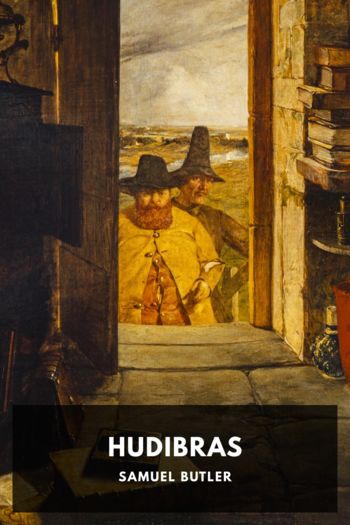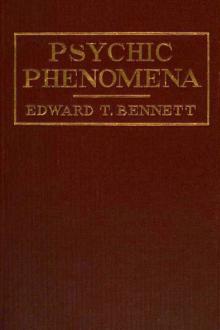The Diary by Samuel Pepys (children's ebooks online TXT) 📕

Description
Pepys’ Diary is an incredibly frank decade-long snapshot of the life of an up and coming naval administrator in mid-17th century London. In it he describes everything from battles against the Dutch and the intrigues of court, down to the plays he saw, his marital infidelities, and the quality of the meat provided for his supper. His observations have proved invaluable in establishing an accurate record of the daily life of the people of London of that period.
Pepys eventually stopped writing his diary due to progressively worse eyesight, a condition he feared. He did consider employing an amanuensis to transcribe future entries for him, but worried that the content he wanted written would be too personal. Luckily for Pepys, his eyesight difficulties never progressed to blindness and he was able to go on to become both a Member of Parliament and the President of the Royal Society.
After Pepys’ death he left his large library of books and manuscripts first to his nephew, which was then passed on to Magdalene College, Cambridge, where it survives to this day. The diary, originally written in a shorthand, was included in this trove and was eventually deciphered in the early 19th century, and published by Lord Baybrooke in 1825. This early release censored large amounts of the text, and it was only in the 1970s that an uncensored version was published. Presented here is the 1893 edition, which restores the majority of the originally censored content but omits “a few passages which cannot possibly be printed.” The rich collection of endnotes serve to further illustrate the lives of the people Pepys meets and the state of England’s internal politics and international relations at the time.
Read free book «The Diary by Samuel Pepys (children's ebooks online TXT) 📕» - read online or download for free at americanlibrarybooks.com
- Author: Samuel Pepys
Read book online «The Diary by Samuel Pepys (children's ebooks online TXT) 📕». Author - Samuel Pepys
For “bill of imprest.” In Italian imprestare means “to lend.” In the ancient accounts of persons officially employed by the crown, money advanced, paid on, account, was described as “de prestito,” or “in prestitis.” —M. B. ↩
John Holland was secretary to Sir G. Carteret, then Treasurer of the Navy, and was author of A Brief Discourse on the Navy, written in 1638. See July 25th, 1662. ↩
The system of tickets afterwards gave great trouble, and caused much discontent. —B. ↩
Henry Pinckney (sometimes called Major Pinckney) of the Three Squirrels in Fleet Street over against St. Dunstan’s Church. He was founder of the banking firm now known as Messrs. Goslings and Sharpe (see Hilton Price’s Handbook of London Bankers, 1876, p. 63). He must not be confounded with Leonard Pinckney, one of the Four Tellers of the Receipt of the Exchequer. ↩
“The Fleece Tavern, in York Street, Covent Garden,” observes John Aubrey, in his Miscellanies, p. 31, “was very unfortunate for homicides; there have been several killed; three in my time. It is now (1692) a private house.” In Rugge’s Diurnal is the following entry: “Nov. 1660. One Sir John Gooscall was unfortunately killed in the Fleece Tavern, Covent Garden, by one Balendin, a Scotchman, who was taken, and committed to the Gatehouse in this month.” The tavern was on the west side of Bridges Street, about six doors south of Russell Street. If Aubrey did not blunder there may have been a back entrance from York Street. William Clifton was the keeper of the tavern. ↩
Ben Jonson’s Epicœne, first published in 1609. ↩
The names of Cromwell, Ireton, and Bradshaw are not found in the Registers of Westminster Abbey. Colonel Chester, in his edition of the Registers (p. 521), prints the royal warrant for a further exhumation of Commonwealth personages, dated September 9th, 1661. This warrant contains twenty-one names, and these bodies were re-interred on the green on the north side of the Abbey, between the north transept and the west end. ↩
Killigrew’s house, see ante November 20th and 22nd, and above on the 4th of this month. Pepys sometimes calls it the Theatre and at others the Playhouse. ↩
Falstaff was acted by Cartwright, but neither Downes nor Genest give the names of the actors who took the characters of Justice Shallow and Dr. Caius. ↩
Jonas Moore was born at Whitley, Lancashire, February 8th, 1617, and was appointed by Charles I tutor to the Duke of York. Soon after the Restoration he was knighted and made Surveyor-General of the Ordnance. He was famous as a mathematician, and was one of the founders of the Royal Society. He died August 27th, 1679, and at his funeral sixty pieces of ordnance were discharged at the Tower. ↩
There were taverns with this sign in the Strand and Fleet Street. They are registered in the list of taverns in London and Westminster in 1698 (Harl. MS. 4716). ↩
The Middlesex Sessions House in St. John Street, Clerkenwell, named after Sir Baptist Hicks, one of the justices, and afterwards Viscount Campden, at whose cost it was built in 1612. The Sessions House was removed to the present building on Clerkenwell Green in 1782. ↩
Mrs. Crisp. ↩
Which forms part of his Church History, book vi. ↩
Artamène ou le Grand Cyrus, by Magdelaine de Scudéry, the second of her works, which was published in 1650. ↩
All instruments of the harpsichord and spinet kind were styled virginals. ↩
The Assurance was a fourth-rate of forty guns, built at Deptford in 1646 by P. Pett, sen. ↩
John Stoakes, late captain of the Royal Henry. ↩
John Denham, son of Sir John Denham, Lord Chief Justice of the King’s Bench in Ireland, born at Dublin in 1615, appointed at the Restoration Surveyor-General of the Works, and created a Knight of the Bath at the Coronation of Charles II; better known as the author of Cooper’s Hill. He was one of the original Fellows of the Royal Society. His troubles with his second wife are related further on in the Diary. He died March, 1668–9, and was buried in Westminster Abbey. ↩
Kennard was master-joiner at Whitehall, see February 11th, 1660–61. ↩
Nothing further appears to have been done in respect to Sir Robert Slingsby’s scheme of an Order of Knights of the Sea. ↩
The Stocks originally stood on the site of the Mansion House. At this time the place was occupied by a market. ↩
Sir Charles Berkeley, in the Memoirs of Grammont improperly called Sir George Berkeley, created Baron Berkeley of Rathdown and Viscount Fitzharding of Bearhaven (in Ireland) in 1663, and Earl of Falmouth in 1665, was the confidant and favourite of the king. He was killed at Southwold Bay, in the seafight, June 2nd, 1665, and the earldom became extinct. The Duke of York had married Anne Hyde on the 3rd September before. ↩
Pepys seems to have been let off very easily, for, by Act of Parliament 18 Car. II cap. I (1666), servants were to pay one shilling in the pound of their wages, and others from one shilling to three shillings in the pound. ↩
By the proclamation of January 27th, 1660–61, a double ducat was valued at 18s. and a golden rider at £1 2s. 6d. ↩
Probably the Coffee House in Exchange Alley





Comments (0)